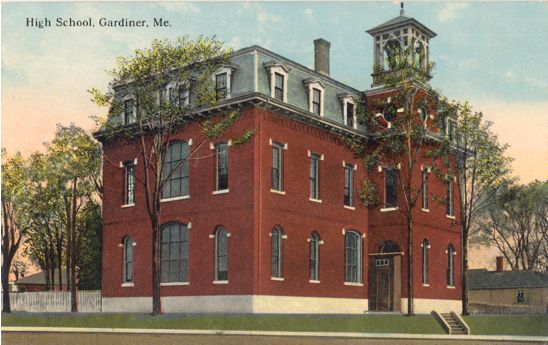we went from grand to pedestrian, from castle to factory. Looking at high schools, it's even more startling. The old buildings were statements about the power and glory of education. Of course, they weren't for everybody—especially the high schools. The trouble is that once we claimed them for "everyone," we forgot to build them to be inspiring.She goes on to relate this decline in design to a more general trend in which the promise of educational equality is payed lip-service to, meanwhile still avoiding the hard task of actually doing something about it in a meaningful way. She refers to Harvard's Paul E. Peterson as saying in essence:
...all our favorite silver bullets have failed to change scoring patterns over the past half-century: the end of legal segregation, extra federal dollars for students in poverty, high-stakes tests, schools of choice—via charters or vouchers, teachers with more degrees, teachers' unions, improved wages for teachers, and even smaller schools.
Wait a second here, Deborah - I have a silver bullet to add to the list!
OK, maybe it's not a single bullet - more like a full clip. The standard model currently is guaranteeing each kid a classroom of 29 other kids and a teacher. Within that model, miracles are supposed to occur that will completely reverse social stratification and generational poverty in one fell swoop. I call it the "Rambo Teacher" model. Federal funds are then sprinkled over the top like pixie dust - whoopie, reduced lunches and an extra hour of tutoring a week to the rescue!
Of course, as we know - there are huge differences in levels of human/social capital between students. So instead of focusing resources on finding better teachers, or marginal programmatic improvements, how about creating a baseline for "Student Capital": what total resources the student brings to the table.
Any number of factors could go into this framework - parent education, family income, number of parents at home, language & cognitive skills, emotional/behavioral evaluation. What the heck - test the parents too! It may require an entire level of administration to assess children at a certain age, and maybe every two years thereafter. But this data would then be used to allocate an appropriate level of resources and targeted intervention, if necessary.
The idea needs a lot of work, but I think if we are to take seriously the idea that no child be left behind, that each child has a constitutional right to an equal education, this would be an excellent way of leveraging the public education system. Currently, all students get a very similar level of funding. In this system, that paradigm is reversed and some students will get dramatically less services, while others dramatically more. The whole thing is essentially means tested. In a very real sense, the concept is very similar to that of special education. But instead of only acknowledging that a child with a learning disability or physical handicap has a special need, that designation is broadened to include a whole host of statistically significant risk factors for educational failure.
I think we've been going about this in a totally wrong way. We've looked past family capital for too long - even while research has told us for decades that parenting is just as important if not more so than schooling. Yet while we cannot (should not!), replace parenting, we can take ownership of that deficiency and take real steps to ameliorate its effects both through working with parents and providing extra resources to the child through schooling, home visits, or some other combination of programmatic engagement. We don't need new schools, or new teachers, or new curriculum. We need a new way of looking at how education is distributed. It is simply unfair that some children grow up in households that leave them woefully unprepared, while others are pushing them to the very top. This is not a recipe for social justice.

No comments:
Post a Comment